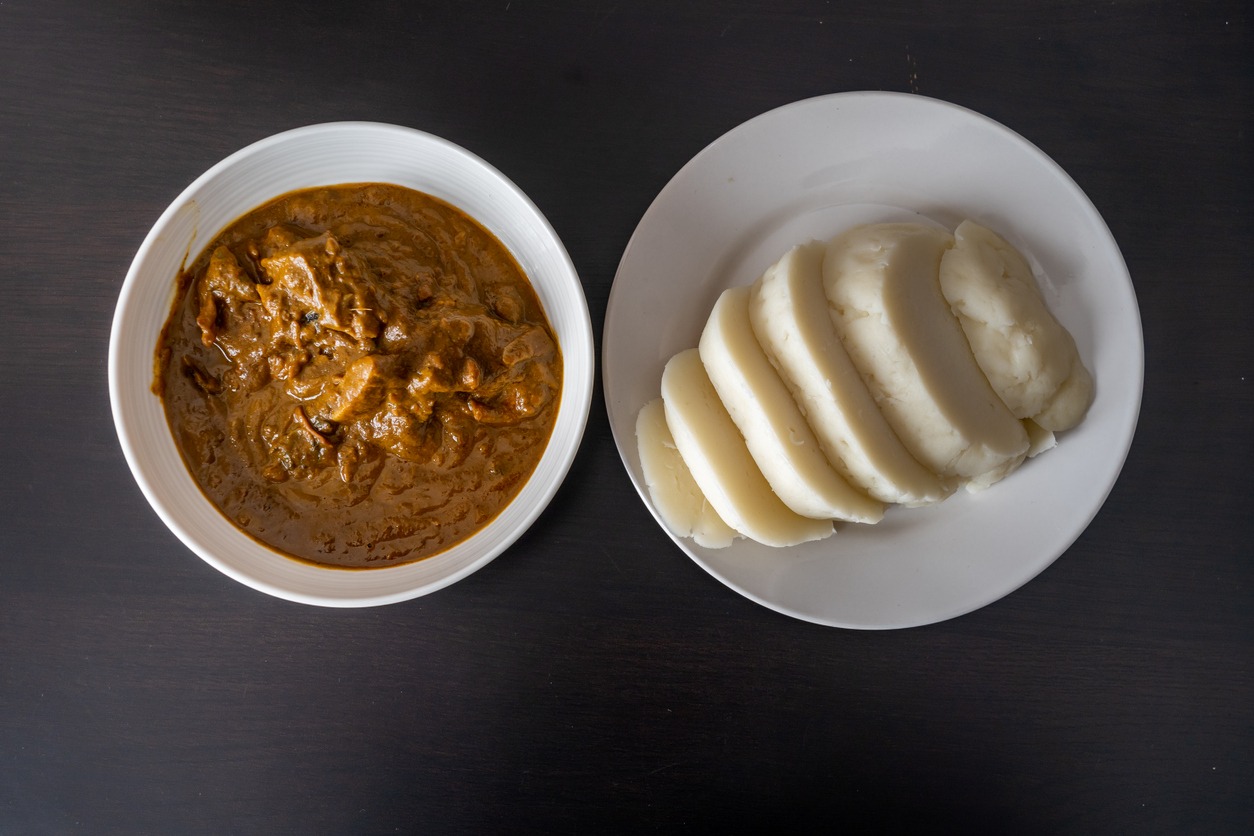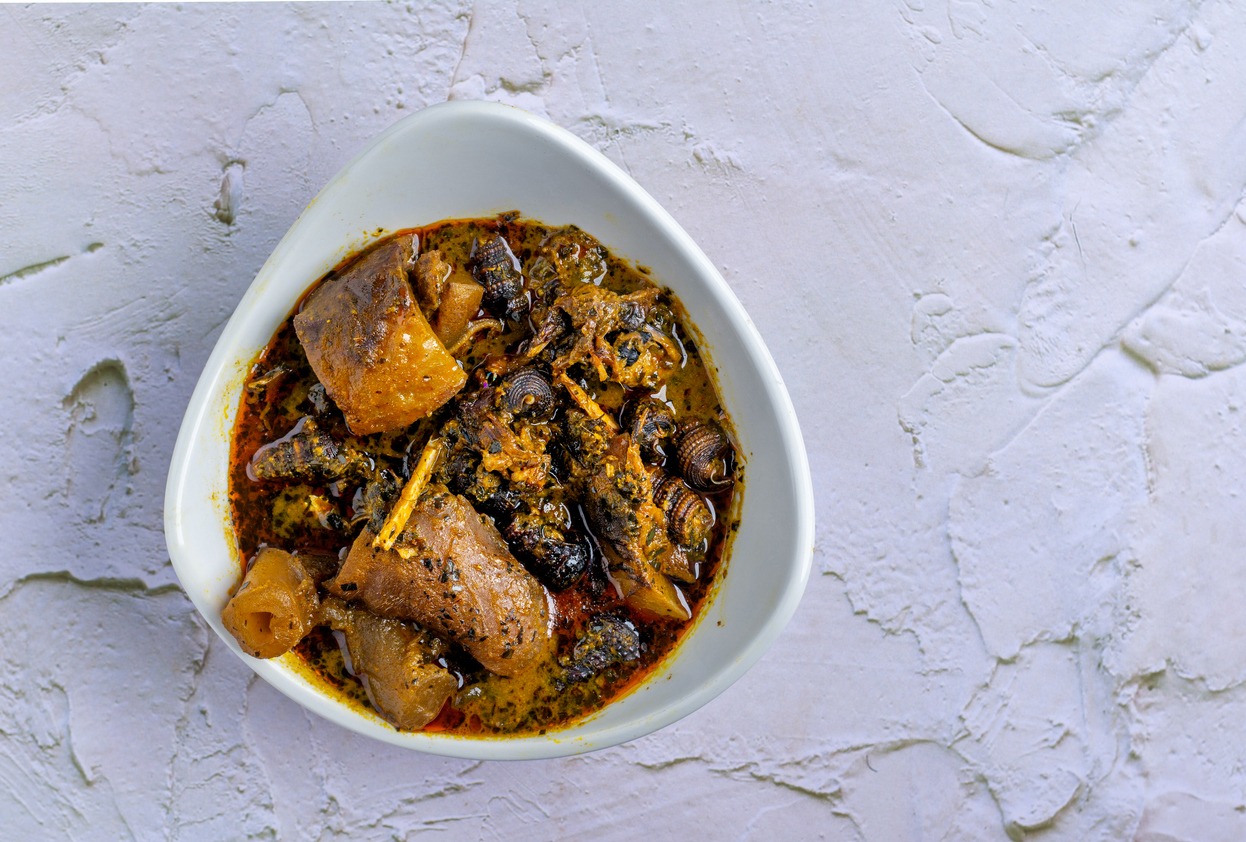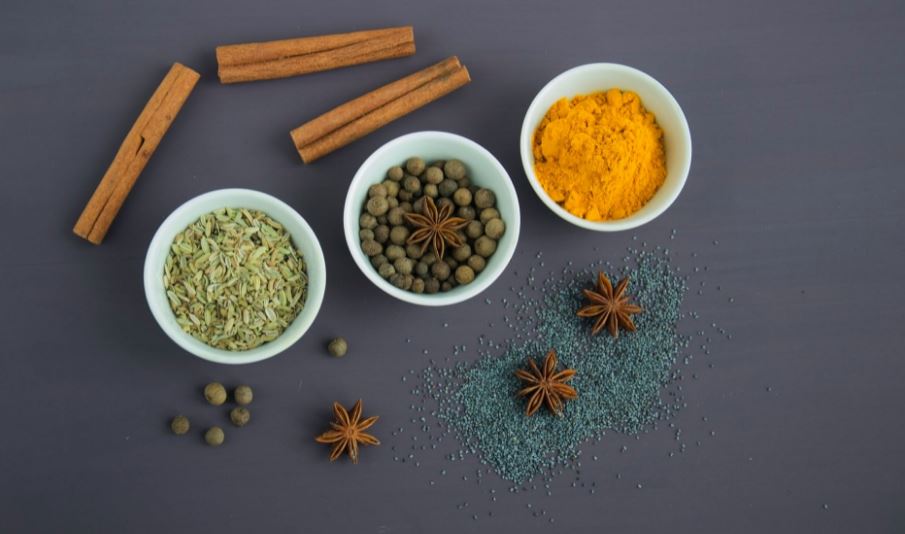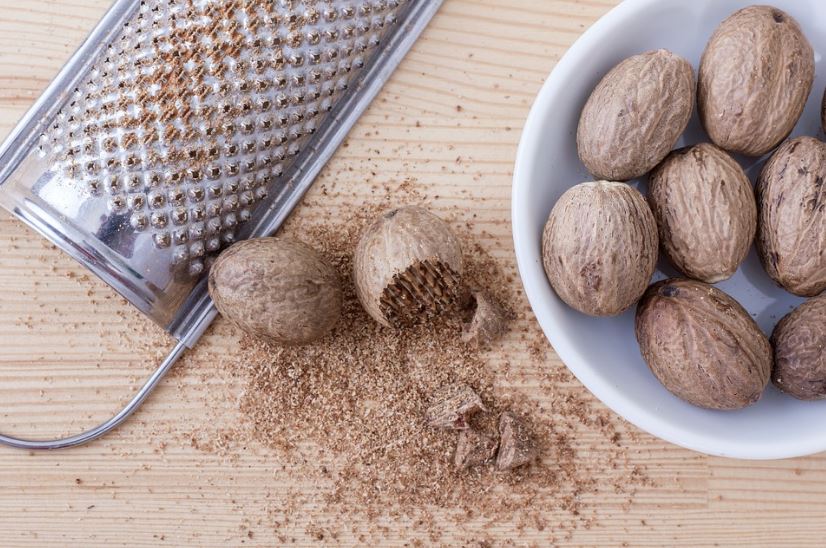Banga Soup is among the most nourishing soups you can make with palm nuts. All it takes to improve this soup is a variety of fish and meat, a selection of spice flavorings, and a dash of beletete at the end. It’s a simple recipe that produces amazing results!
But what is Banga soup? Banga, also known as izuwo ibiedi in Isoko and Oghwo amiedi in Urhobo, is a kind of palm nut soup from Nigeria’s southern Niger Delta, specifically the Urhobo ethnic group.
Sometimes, the soup is served with kwacoco, a cocoyam (taro) pudding. Dried/smoked fish, fresh catfish (fresh fish Banga soup), or meat are the most commonly used Banga soup ingredients.
As previously stated, various spices are used to prepare the delectable palm nut soup. Continue reading to find out which ones.
Banga Spice Blend
Banga spice blend is a warm spice mix that piques interest. You might not have heard of this before, but once you try it, you will fall in love with it. It is a key ingredient in the preparation of Banga soup.
However, don’t limit its application to just making sauce. Experiment with other drinks and foods by sprinkling a small amount on them to produce an exciting new flavor that you will return to again and again.
The ingredients used in these recipes, like those in other recipes, vary from tribe to tribe and from person to person. The names of the spices are derived from their ethnic names; the Urhobos and Itshekiris are the two ethnic groups that have popularized these spices. The Itshekiris call them by the names listed below:
Ataiko
Ataiko is a tiny spindle-shaped spicy seed native to West Africa with a distinct flavor. It’s a fantastic spice on its own, and it blends delightfully with other spices to create an exciting experience.
Despite its origins in West Africa, this spice seed is now obtainable in many African food stores in North America and Europe. So you can touch it, look at it, and taste it.
Grind this spice in a coffee grinder and sprinkle some in your latte or smoothie if you enjoy trying new foods.
Gbafilo
Gbafilo is a nutmeg species native to West Africa. Like all other nutmeg species, the spice is the inner edible seed, which is ground and used in stews, sauces, or drinks. Many of the spices used during cooking are often used in prepping herbal medicines in West Africa.
So, don’t be afraid to use it in the same way you would the other popular nutmeg species. This, like the other spices, is now available in many African shops and is often easier to obtain than the others.
Ighereje
Ataiko’s sister spice is ighereje. They have a similar appearance, but ighereje is more expensive, flatter, and has a milder flavor. Some people make Banga sauce with only these two spices, which still tastes fantastic.
Ghereje, like Ataiko, is now present in some African grocery stores. Don’t let anything stop you from experimenting with this spice and sprinkling it on your food and beverages.
Omilo
Omilo is a seed spice similar to gbafilo but smaller and oval. It is also included in the pepper soup spice mix. Many people don’t put this in their Banga, but it adds flavor without overwhelming the entire dish if used sparingly.
Yanghanyanghan
Another spice you can include in your Banga spice mix is yanyan, but its full name in Itshekiri is yanghanyanghan. It is a pea-family flowering plant.
Yanyan is well-known in West Africa as an active component in herbal medicine preparation and spice. The aromatic flavor of this spice has earned it the moniker “perfume spice.” Many people use it to make Banga soup and pepper soup.
It’s a long woody spice with jagged curve edges that you cut into the desired quantity like cinnamon sticks. And it can be added whole or ground to sauces and stews.
How to Prepare Banga Soup

- Season the dried fish and beef with salt, seasoning cubes, and onions, then add water and cook until tender. Separate the stock from the meat and set it aside.
- Place a large pan over medium heat, add the palm nut fruit, and dilute with warm water twice the palm fruit used. If you use 800g of palm fruit, you must add 1.6 liters of water to the pan. You can add just about every tough beef at this point to help soften it further and infuse flavor.
- Stir until thoroughly combined, then bring to a boil for around 20 minutes. At this point, please do not cover the pan with a lid because it will boil over. To avoid this, place a wooden spoon across the pot.
- At this point, you’ll notice the palm fruit extract bubbling and thickening and the oil floating on the surface of the soup.
- Cook for another 10-15 minutes after adding the blended scotch bonnet, assorted beef, and periwinkle.
- Cook for another 10 minutes after adding the oburunbebe stick, Banga spice, and ground crayfish. The Banga spice introduces a very rich smell to the soup that you can almost taste. Check for seasoning and salt, and thin with reserved stock if the soup is too thick. Stir frequently to stop the soup from sticking to the bottom of the pan.
- Because fresh catfish cooks quickly, save it for the very end of your cooking time.
- Add the fresh shrimps and fish to the soup, along with the bitter leaf or beletete leaves, and cook for another 10-12 minutes on low heat. If you need to stir at any moment after adding the fresh fish, be careful, or hold the pan on its two handles and twirl it.
- You can spoon out the floating oil and incorporate it in another local Nigerian dish if you want.
Your soup is now ready to be accompanied by fufu, starch, pounded yam, Eba, or any other dish of your choice.
Is Banga Soup Beneficial For You?

It certainly is! Banga soup is high in nutrients and has numerous health benefits. It has a high calorie, protein, and fat content and some essential minerals and vitamins such as vitamin A, vitamin E, vitamin K, and magnesium. Here are a few of the soup’s advantages:
- It contains unsaturated fat.
- It is mineral-dense.
- This food is high in vitamin K and antioxidants.
- This supplement is used to treat vitamin A deficiency.
- It contains many nutrients that aid in proper brain function, among others!
If the high-calorie content turns you off, we urge you to reconsider and not miss out on this delectable soup. And after having your fill of Banga soup, try out the Ukrainian Borscht soup next!



